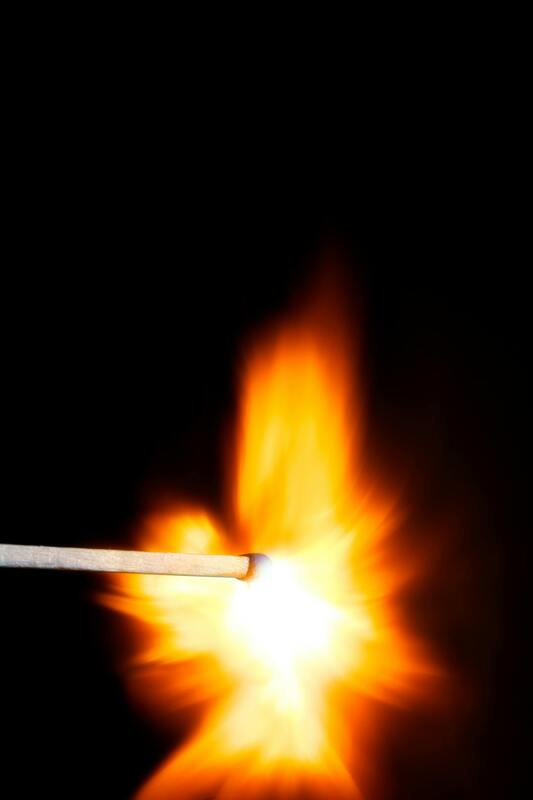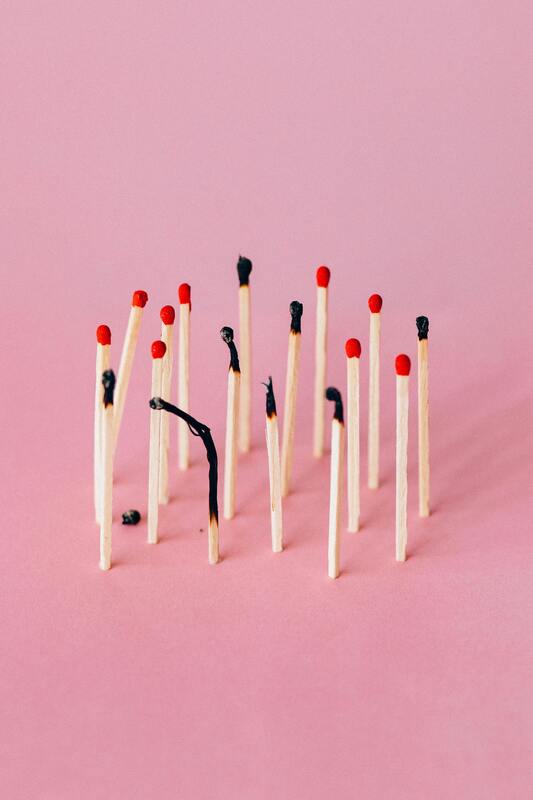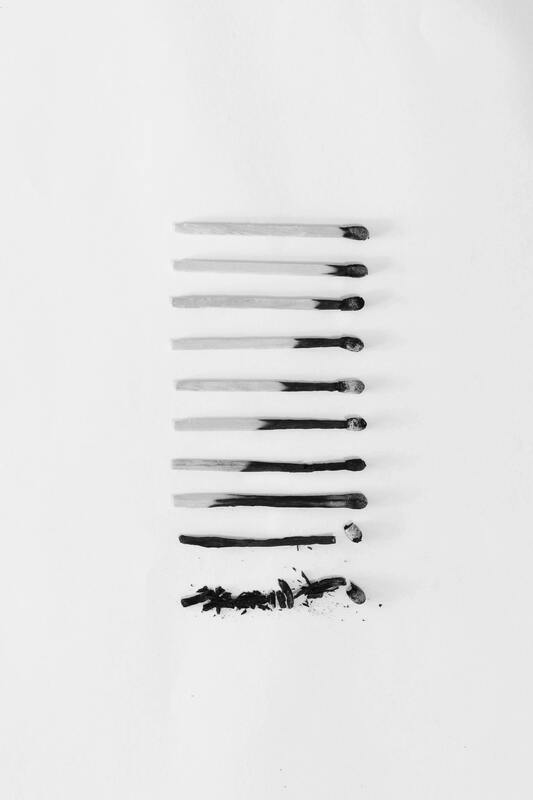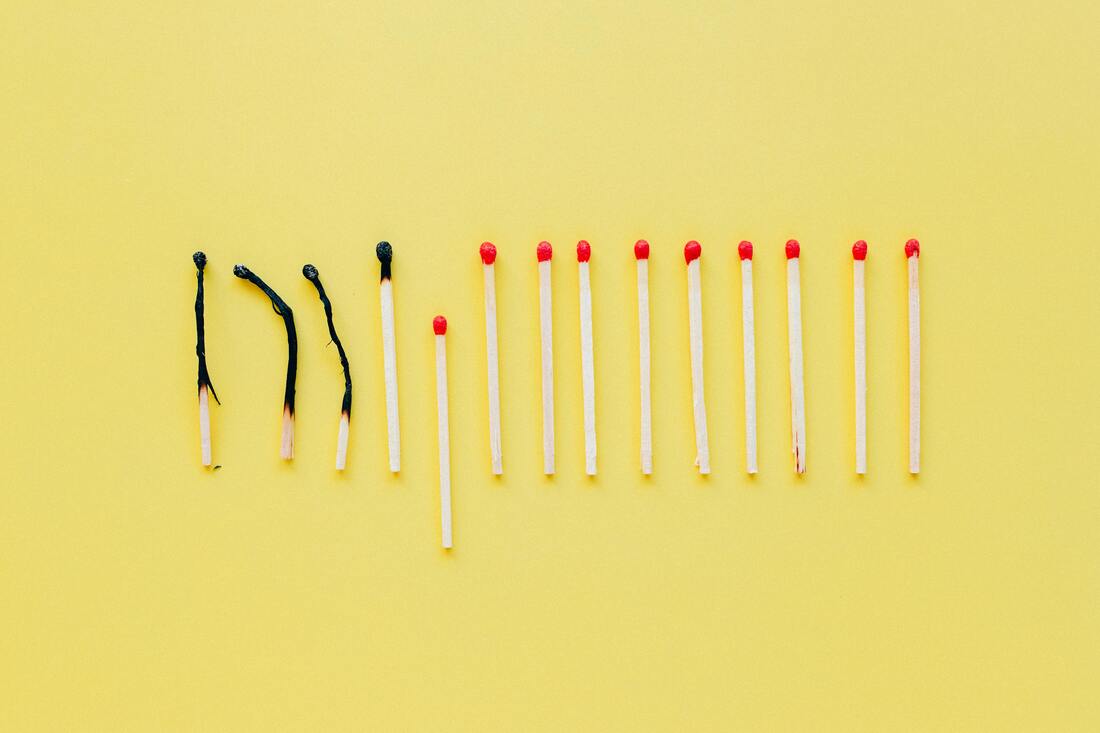Waterproof matches are just matches that still light even when they're wet. People usually take them when they go camping, in survival kits, and for stuff the military and sailors do, or just for emergencies.
⚙️ How They Work
Waterproof matches have a few things going for them:
Waterproof Stuff:
The match head and sometimes a bit of the stick are covered in something that repels water, like wax.
Special Ingredients:
The stuff that makes the match light (usually a mix of chemicals) is made to light up even when it's damp.
Special Striker:
The part you strike the match on has red phosphorus and other chemicals that react with the match head when you rub it.
🧪 Kinds of Waterproof Matches
Match Type| What it is| What's cool about it
---|---|---
Normal Waterproof| Just regular matches with a wax or varnish coating| Can handle rain or a quick dip in water
Stormproof/Windproof| Bigger heads that burn hotter and longer| Stays lit when it's windy and rainy
Survival/Military-Grade| Burns for a long time, and can even relight after being underwater| Great for really tough situations
Homemade Waterproof Matches| Regular matches sealed with wax or nail polish| Cheap to make yourself
🛠️ How to Make Waterproof Matches (DIY)
Method 1: Wax it
1. Melt some wax in a container.
2. Dip the match head and a bit of the stick in the wax for a few seconds.
3. Take it out and let it dry on wax paper.
4. To use: Scrape the wax off the tip before lighting.
Method 2: Nail Polish Trick
1. Paint the match head with a thin coat of clear nail polish.
2. Let it dry.
3. Optional: Paint halfway down the stick for extra protection.
Method 3: Shellac or Lacquer
1. Dip the match heads in shellac or waterproof lacquer.
2. Let them dry good before you put them away.
📦 How to Store Them
* Keep your matches in a sealed container that won't let water in (like a metal tin or a film container).
* Put a little packet that absorbs moisture in with them (like silica gel or even dry rice).
* Keep them away from heat and sunlight.
* Carry an extra striker with you (inside the lid or wrapped in plastic).
⚠️ Be Careful!
* Don't dip strike-anywhere matches in too much wax because it can make them not light.
* Don't use stuff like paint to coat them because it can be dangerous.
* Keep matches away from gas, lighters, or anything else that burns easily.
* Get rid of old matches safely—don't just throw them in the fire.
🔄 Other Options for Making Fire
* Butane or plasma lighters (work well and you can refill them)
* Firesteel (works even when wet and lasts a long time)
* Magnesium fire starter (burns really hot)
* Fire piston (uses air pressure, tough)
💡 Field Tips
* If your matches get wet, wipe them off gently instead of trying to light them right away.
* When it's windy, use your body or hand to block the wind when you light the match.
* Always have more than one way to start a fire when you're outside.
* Keep your striker dry—store extras in a separate place.
⚙️ How They Work
Waterproof matches have a few things going for them:
Waterproof Stuff:
The match head and sometimes a bit of the stick are covered in something that repels water, like wax.
Special Ingredients:
The stuff that makes the match light (usually a mix of chemicals) is made to light up even when it's damp.
Special Striker:
The part you strike the match on has red phosphorus and other chemicals that react with the match head when you rub it.
🧪 Kinds of Waterproof Matches
Match Type| What it is| What's cool about it
---|---|---
Normal Waterproof| Just regular matches with a wax or varnish coating| Can handle rain or a quick dip in water
Stormproof/Windproof| Bigger heads that burn hotter and longer| Stays lit when it's windy and rainy
Survival/Military-Grade| Burns for a long time, and can even relight after being underwater| Great for really tough situations
Homemade Waterproof Matches| Regular matches sealed with wax or nail polish| Cheap to make yourself
🛠️ How to Make Waterproof Matches (DIY)
Method 1: Wax it
1. Melt some wax in a container.
2. Dip the match head and a bit of the stick in the wax for a few seconds.
3. Take it out and let it dry on wax paper.
4. To use: Scrape the wax off the tip before lighting.
Method 2: Nail Polish Trick
1. Paint the match head with a thin coat of clear nail polish.
2. Let it dry.
3. Optional: Paint halfway down the stick for extra protection.
Method 3: Shellac or Lacquer
1. Dip the match heads in shellac or waterproof lacquer.
2. Let them dry good before you put them away.
📦 How to Store Them
* Keep your matches in a sealed container that won't let water in (like a metal tin or a film container).
* Put a little packet that absorbs moisture in with them (like silica gel or even dry rice).
* Keep them away from heat and sunlight.
* Carry an extra striker with you (inside the lid or wrapped in plastic).
⚠️ Be Careful!
* Don't dip strike-anywhere matches in too much wax because it can make them not light.
* Don't use stuff like paint to coat them because it can be dangerous.
* Keep matches away from gas, lighters, or anything else that burns easily.
* Get rid of old matches safely—don't just throw them in the fire.
🔄 Other Options for Making Fire
* Butane or plasma lighters (work well and you can refill them)
* Firesteel (works even when wet and lasts a long time)
* Magnesium fire starter (burns really hot)
* Fire piston (uses air pressure, tough)
💡 Field Tips
* If your matches get wet, wipe them off gently instead of trying to light them right away.
* When it's windy, use your body or hand to block the wind when you light the match.
* Always have more than one way to start a fire when you're outside.
* Keep your striker dry—store extras in a separate place.
**What's in a Match?**
Okay, so a normal stormproof match head has these things:
* Something to Help it Burn: Potassium chlorate (KClO₃) or potassium nitrate (KNO₃)—basically, stuff that gives off oxygen.
* Fuel: Like sulfur, charcoal, or even starch—this stuff burns, of course.
* Something to Hold it Together: Animal glue, dextrin, or shellac—it keeps the match head from falling apart.
* Friction Stuff: Glass powder or grit—this makes heat when you strike it.
* Color: Iron oxide, manganese dioxide, or just some kind of dye to make it look cool.
**The Striker Part**
This has:
* Red phosphorus (the safe kind)
* Glue and rough stuff like powdered glass or silica.
When you strike it, the friction turns some of that red phosphorus into white phosphorus, which catches fire and then lights the match head.
**Waterproof Stuff**
They put wax, lacquer, or paraffin on the match after it's made.
This does a few things:
* Keeps water out.
* Stops the match from getting soft early.
* Still burns when you light it.
**How it Burns**
1. Strike the match, and the tip gets hot (around 150–200°C).
2. Red phosphorus turns into white phosphorus vapor and catches fire super easy.
3. The stuff that helps it burn mixes with the fuel and makes a flame (700–800°C).
4. Then the wood or cardboard catches and keeps the fire going.
**Stormproof Matches**
These have a bigger head with extra fuel on the stick.
They burn for like 10–20 seconds and don't blow out easily, even if you dunk them in water for a sec.
**Using Matches in the Wild**
Things that can mess with how well they work:
| Thing | What it Does |
| :-------- | :---------------------------------------------------------- |
| Dampness | Makes them harder to light, but the waterproof stuff helps. |
| Wind | Normal matches might go out; stormproof ones are better. |
| High Up | Might take a little longer to light because the air is thin. |
| Cold | The wax can get stiff—warm them up in your hand. |
**Good Idea**
Always have a few ways to start a fire (matches, lighter, fire starter).
Keep the striker dry, or it won't work.
Switch out your matches every couple of years; the waterproof stuff can break down.
**Make Your Own Waterproof Match Container**
**Easy Way**
Stuff you need:
* Small container with a screw-top (aluminum or plastic)
* Cotton balls
* Something to soak up water (desiccant packet or rice)
How to do it:
1. Put a cotton ball in the bottom.
2. Add 10–20 matches.
3. Put the striker in a plastic bag or wax paper.
4. Add the stuff to soak up water.
5. Close it tight and maybe put wax or tape on the threads.
**Better Way**
* Use PVC pipe (¾-inch) with caps on both ends.
* Glue one cap on, and tape or screw the other one on.
* Paint it so you can see it.
* Add something that floats or wrap it with cord.
**Testing Your Matches**
To see if they're still waterproof:
1. Put a few in water for 5 minutes.
2. Take them out and shake off the water.
3. Scrape off some wax.
4. Strike them—they should light.
5. Compare them to matches that weren't in the water.
If they don't light, put more wax on them.
**How Long They Last**
If you keep them sealed up, they can last 10–15 years.
Water and sun can mess them up.
Put new wax on them or get new ones after a long time.
Keep them inside where it's cool, dry, and dark.
**More Than Just Fire**
Matches can also:
* Clean stuff: Boil water, heat tools, or burn gross stuff.
* Signal for help: The fire is easy to see, even in the rain.
* Light rope: Use them to light slow-burning ropes.
* Melt wax: To seal things or make a candle.
* Heat things: A bunch of storm matches can heat a small metal cup.
**Take Care of the Environment & Be Safe**
* Don't throw used matches or wax in the water.
* Keep them away from gas or other things that burn easily.
* Don't leave them in hot places (like your car on a sunny day).
* Make sure they're out before you throw them away.
**Fixing Problems**
| What's Wrong | Why | How to Fix It |
| :------------------- | :----------------------------------- | :----------------------------------------- |
| Won't light | Too much wax / wet striker | Scrape wax, dry the striker |
| Burns weak | Got a little wet | Dry it out and seal it up again |
| Wax is falling off | Bad wax job / old | Put new wax on it |
| Striker doesn't work | Used too much / got wet | Keep a spare striker in a plastic bag |
**Tips for Starting Fires**
* Use cotton balls with petroleum jelly on them as tinder.
* If it's raining, light the match in a small hole.
* Stand so your body blocks the wind.
* To keep the fire going, light a small piece of dry wood or resin right after the match lights.
Okay, so a normal stormproof match head has these things:
* Something to Help it Burn: Potassium chlorate (KClO₃) or potassium nitrate (KNO₃)—basically, stuff that gives off oxygen.
* Fuel: Like sulfur, charcoal, or even starch—this stuff burns, of course.
* Something to Hold it Together: Animal glue, dextrin, or shellac—it keeps the match head from falling apart.
* Friction Stuff: Glass powder or grit—this makes heat when you strike it.
* Color: Iron oxide, manganese dioxide, or just some kind of dye to make it look cool.
**The Striker Part**
This has:
* Red phosphorus (the safe kind)
* Glue and rough stuff like powdered glass or silica.
When you strike it, the friction turns some of that red phosphorus into white phosphorus, which catches fire and then lights the match head.
**Waterproof Stuff**
They put wax, lacquer, or paraffin on the match after it's made.
This does a few things:
* Keeps water out.
* Stops the match from getting soft early.
* Still burns when you light it.
**How it Burns**
1. Strike the match, and the tip gets hot (around 150–200°C).
2. Red phosphorus turns into white phosphorus vapor and catches fire super easy.
3. The stuff that helps it burn mixes with the fuel and makes a flame (700–800°C).
4. Then the wood or cardboard catches and keeps the fire going.
**Stormproof Matches**
These have a bigger head with extra fuel on the stick.
They burn for like 10–20 seconds and don't blow out easily, even if you dunk them in water for a sec.
**Using Matches in the Wild**
Things that can mess with how well they work:
| Thing | What it Does |
| :-------- | :---------------------------------------------------------- |
| Dampness | Makes them harder to light, but the waterproof stuff helps. |
| Wind | Normal matches might go out; stormproof ones are better. |
| High Up | Might take a little longer to light because the air is thin. |
| Cold | The wax can get stiff—warm them up in your hand. |
**Good Idea**
Always have a few ways to start a fire (matches, lighter, fire starter).
Keep the striker dry, or it won't work.
Switch out your matches every couple of years; the waterproof stuff can break down.
**Make Your Own Waterproof Match Container**
**Easy Way**
Stuff you need:
* Small container with a screw-top (aluminum or plastic)
* Cotton balls
* Something to soak up water (desiccant packet or rice)
How to do it:
1. Put a cotton ball in the bottom.
2. Add 10–20 matches.
3. Put the striker in a plastic bag or wax paper.
4. Add the stuff to soak up water.
5. Close it tight and maybe put wax or tape on the threads.
**Better Way**
* Use PVC pipe (¾-inch) with caps on both ends.
* Glue one cap on, and tape or screw the other one on.
* Paint it so you can see it.
* Add something that floats or wrap it with cord.
**Testing Your Matches**
To see if they're still waterproof:
1. Put a few in water for 5 minutes.
2. Take them out and shake off the water.
3. Scrape off some wax.
4. Strike them—they should light.
5. Compare them to matches that weren't in the water.
If they don't light, put more wax on them.
**How Long They Last**
If you keep them sealed up, they can last 10–15 years.
Water and sun can mess them up.
Put new wax on them or get new ones after a long time.
Keep them inside where it's cool, dry, and dark.
**More Than Just Fire**
Matches can also:
* Clean stuff: Boil water, heat tools, or burn gross stuff.
* Signal for help: The fire is easy to see, even in the rain.
* Light rope: Use them to light slow-burning ropes.
* Melt wax: To seal things or make a candle.
* Heat things: A bunch of storm matches can heat a small metal cup.
**Take Care of the Environment & Be Safe**
* Don't throw used matches or wax in the water.
* Keep them away from gas or other things that burn easily.
* Don't leave them in hot places (like your car on a sunny day).
* Make sure they're out before you throw them away.
**Fixing Problems**
| What's Wrong | Why | How to Fix It |
| :------------------- | :----------------------------------- | :----------------------------------------- |
| Won't light | Too much wax / wet striker | Scrape wax, dry the striker |
| Burns weak | Got a little wet | Dry it out and seal it up again |
| Wax is falling off | Bad wax job / old | Put new wax on it |
| Striker doesn't work | Used too much / got wet | Keep a spare striker in a plastic bag |
**Tips for Starting Fires**
* Use cotton balls with petroleum jelly on them as tinder.
* If it's raining, light the match in a small hole.
* Stand so your body blocks the wind.
* To keep the fire going, light a small piece of dry wood or resin right after the match lights.



